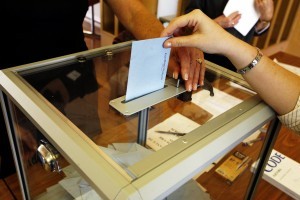The political wrestling matches on cable news and races to the polls might prove to be of benefit to the charitable sector. A collection of 2012 giving data suggests that, contrary to popular opinion, political contributions do not siphon away dollars from charities.
In fact. political donors increased their charitable giving by 0.9 percent from 2011 to 2012, while non-political donors decreased their charitable donations by 2.1 percent.
Blackbaud, a Charleston, S.C.-based software provider, developed the election-year giving report with data from a 400,000-donor cross section of the Federal Election Commission and its own database. Political donations in the study were given a $200 floor, as that is the level at which campaigns are required to report.
“One of the things I discovered in my research was that donors who contribute to political campaigns are also very generous philanthropically, at every income level,” said Chuck Longfield, Blackbaud’s chief scientist and co-presenter of the report, via an email. “These are people, I believe, who believe in their ability to influence the world around them, either through elected officials or through non-profits.”
The typical organizational donor tends to be of advanced age, but Longfield reported that political donors tend to skew younger. Political donors also tend to be male and of higher income ranges. Other key findings from the report include:
* Young donors showed the greatest increase in charitable giving from 2011 to 2012 among both political and non-political donors. Political donors ages 18 to 24 increased charitable giving by 3.4 percent, while their peers ages 25 to 34 increased giving by 10.8 percent. Donors ages 18 to 24 and 25 to 34 were the only non-political donors to increase giving, by 2.9 percent and 1.1 percent, respectively.
Donors ages 75 and older were the only political donors to decrease giving, 0.4 percent, and showed the biggest decrease among non-political donors, 4.5 percent. The decrease of giving among those ages 75 and above stung far more than the increased generosity of young people soothed. The older donors represented 23.7 percent of supporters in 2012 as opposed to 4.2 percent combine among those ages 18 to 34.
* Those with the least apparent means of donating upped giving the most. Political donors with a household income of up to $49,000 increased charitable giving by 5.3 percent, as compared to households earning $50,000 to $99,000, up 0.7 percent, $100,000 to $149,000, down 1.1 percent, and $150,000 and up, a 0.9 percent increase.
Non-political donors of all income ranges decreased giving from 2011 to 2012. The lowest income earners accounted for 31.4 percent of charitable donors, but just 12.5 percent of political donors. Conversely, highest-earning donors made up 11.9 percent of charitable supporters and 32.9 percent of political contributors.
* Specific causes appeared to resonate during the campaign season. Political donors upped contributions to human services causes by 14.5 percent, public and society benefit organizations by 6.8 percent and the arts and culture subsector by 5.3 percent. Healthcare was the lone subsector that saw a decrease, 1.1 percent, among political donors. Human services, 2.6 percent, and public and society benefit, 1.0 percent, were the only subsectors to see increases among non-political donors.
Longfield expects similar results for the 2016 election cycle, with more donors contributing larger amounts to campaigns. A campaign year might be a strong opportunity to try and engage younger donors who are engaged by candidates and current issues. The challenge will then be to maintain donors after the campaign cycle. First-year retention rates tend to be low, especially among younger donors, Longfield said.
Retention remains the name of the game. The report advises organizations to weigh the risk of aligning with campaign-specific issues with new donor acquisition and lapsed donor reinstatement strategies. “What this study shows is that there is no reason why your existing donors would not continue to support your cause,” Longfield said. “Only about 0.5 percent of individuals give to political campaigns and they do not appear to reduce their philanthropy in campaign years.”
Timing will be critical when trying to reactive or draw new donors during the election cycle. Conveying organizational messaging with the volume of campaign communications can be a challenge, making it important to try to avoid intense periods such as primaries. Some organizations might find opportunity in aligning with hot-button campaign topics such as immigration and the environment, but even those efforts could run the risk of ostracizing portions of donors. Longfield advises organizations to tread lightly.











